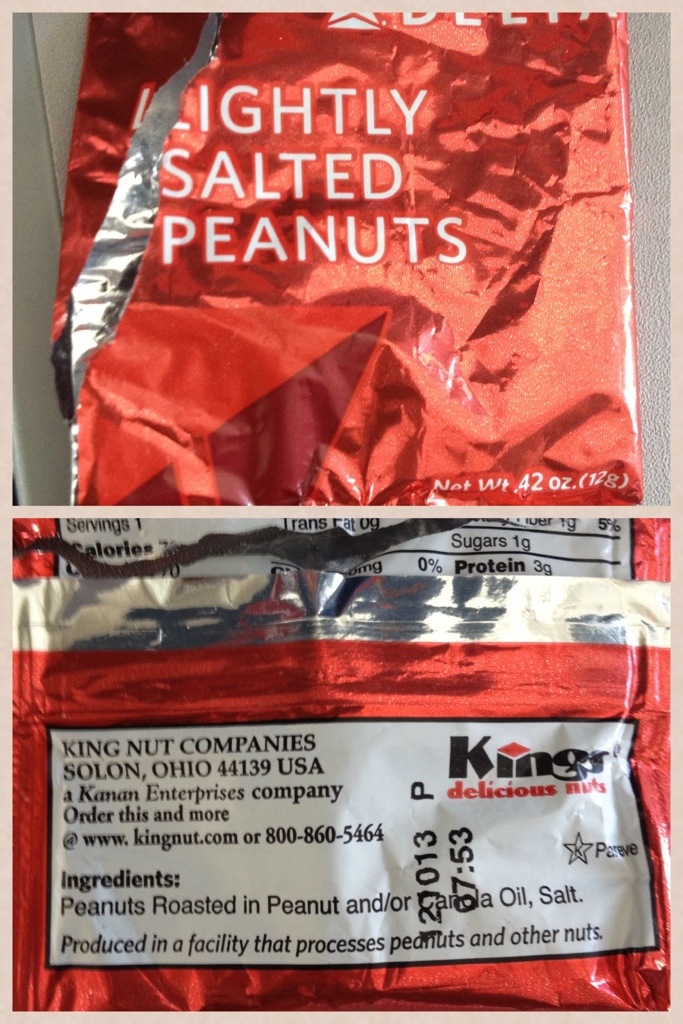I need a passport!!
Speaking of funny episodes in India (see previous post), one started with my mom even before I got started for India.
During my usual daily morning call to mom (one of the first things I do almost everyday is talk to her for a few minutes) the topic went to our trip to Canada for Niagara Falls. She was asking how beautiful it was and how big it was and what did the grand daughters do and so on. I could hear my dad – who last week got hearing aids put in his both ears and therefore overheard it – talking loudly that Niagara Falls is not the biggest waterfall – it is Victoria Falls.
BTW, something about my dad here. He is somewhat of a geography buff. If you ever happen to meet him and ever the topic goes to geography, he will absolutely challenge you to name the capitals of various countries in the world. Fortunately for me, his knowledge of geography stalled after 1980. Every time he challenges me, I counter challenge him with “name the capital of Kazhakastan or Azerbaijan or Eritrea….” – basically any country that has been formed after 1980 or so. “Dekh ge jaa” is usually what he will say before he gives up and goes around doing his usual stuff 🙂
Getting back to the story, my mom heard about Victoria Falls and tried encouraging me to take the daughters to Victoria Falls. She said that they will absolutely love it. Then something struck her. “Jaabi ki? Ota to Africa-y. Passport laagbe to!!”. (“How are you going to go? It is in Africa. You will need a passport”) !!!!!
I still wonder if she has any idea how we go to India. Or for that matter how we went to Canada to see the Niagara Falls.
Of course, I sympathetically agreed with her “That is true. That is true. It will be very difficult”!! 🙂
ATLIADDOHCCU
Peanut processed where???
I can understand how warnings are posted on food packets that it might have been produced in facilities that process peanuts. Peanut allergies are common and in the extreme, fatal.
But when I asked for peanuts (this is on a Delta flight), trying to warn me that it is produced in a facility that processes peanuts – now that is taking it to an extreme, is it not? 🙂
Sharmila’s art show
Did you know?
I have a friend in office who posts some amazing facts on his white board. I have always marveled at some of the crazy facts he knows. Here is one:
1. A rye plant’s root is around 400 miles (650km) long. That is just unbelievable!!!
Here are a couple that somebody else had told me.
2. A crocodile’s digestive juices are so strong that they can digest a nail !! That is why it does not matter that they cannot chew – or for that matter even move their tongue!!!
3. That thing we call “paper money”? – it is not made of paper. Most currency bills in this world are made from – get this – cotton!!! (sometimes a mix of linen and cotton)
Here is one for you to guess and then perhaps Google.
There is only one mammal in this world that cannot jump. Can you guess which one? (BTW, regardless of what that movie title would have you believe, “white men” is NOT the answer 🙂 )
Answer to the previous puzzle
Six coin puzzle
After flying to San Francisco on Monday, flying back to Atlanta on Tuesday and then to DC on Wednesday, I have no doubt that I will sleep off on tomorrow’s (Thursday) early morning flight. So, I figured I might as well post the puzzle tonight and go to sleep.
Pardon the picture – I put it quickly on my iPad app. But here is how it goes.
Six coins are arranged in two rows like in the picture on the left. In three sliding moves, you have to get the circular arrangement on the right. The rules are – (*) you can slide only one coin at a time (*) you cannot “push” other coins away when you move a coin – and of course no lifting the coin off the surface either (*) here is the interesting one – when you move a coin, you have to make sure that when you leave it in its new position, it has to touch two other coins.
Brush with the TSA…
Interesting incident this morning while leaving Atlanta for San Francisco. At Atlanta airport, I realized that I was not cleared for TSA Pre this morning – so had to go stand in the standard queue which was a little crowded. As I walked up to the TSA agent – nice young lady, “Culp” was the name on her badge – I was going to break the ice by commenting something random like “that is a very unique last name” or whatever. But she took charge immediately, and before even she could read my boarding pass told me “I know you. You travel too much”.
I was caught so off guard that, for once, I was at a complete loss of words. I mumbled something like “Yeah, I know” (instead of what I should have done – “Really? How?”) … all the while trying to figure out whether when TSA tells me “I know you” – is that working in my favor or against me 🙂
As I think about it now, there is no way she could have known me due to my travel. There are too many agents in Atlanta airport, too many gates and too many prototypical Indians every week at the airport for her to know me from seeing me at the airport.
So either we have common friends or there was some incident that made her remember me.
Now, the curiosity is killing me!!!!!
Interesting re-cap
While the social media is very active on second guessing a jury decision on the Zimmerman case, Rem Rieder did an interesting column on pointing out the bias media takes on reporting the “too delicious”. The factual layout of how multiple news channels had to recant their stories was, at the very least, interesting. Let’s not also forget that most of this is driven by “ratings” – in other words, what we “want to hear and believe”.
I am copying the text instead of putting the USA Today link.
—
Column: Media got Zimmerman story wrong from start.
The role of the media cannot be ignored in the Zimmerman case.
It’s complicated.
Life is packed with nuances and subtleties and shades of gray.
But the news media are often uncomfortable in such murky terrain. They prefer straightforward narratives, with good guys and bad guys, heroes and villains. Those tales are much easier for readers and viewers to relate to.
Which brings us to Trayvon Martin and George Zimmerman.
The story of their tragic confrontation on February 26, 2012, in Sanford, Florida, was framed early on. Zimmerman, then 28, was the neighborhood watch captain/”wannabe cop” who racially profiled and ultimately killed Martin, an unarmed, hoodie-clad black teenager out on the streets of the gated community Retreat at Twin Lakes simply because he wanted some Skittles.
The storyline quickly took root, amplified by the nearly ubiquitous images of the two: a sweet-looking photo of a several-years-younger Martin released by his family, and a mug shot of Zimmerman from a previous arrest in which he looks puffy and downcast. The contrasting images powerfully reinforced the images of the menacing bully and the innocent victim.
Some of the media’s major mistakes stemmed from stories that fit neatly into that widely accepted narrative. NBC News edited Zimmerman’s comments during a phone call to inaccurately suggest that he volunteered that Martin seemed suspicious because he was black. In fact, Zimmerman was responding to a question when he mentioned the teenager’s race. The network apologized for the error.
Similarly, ABC News broadcast a story reporting that a police surveillance video showed no evidence that Zimmerman suffered abrasions or bled during the confrontation with Martin. Shortly thereafter, it “clarified” the situation, reporting that an enhanced version of the video showed Zimmerman with “an injury to the back of his head.”
When it emerged that Zimmerman’s mother was Peruvian, some news outlets took to referring to him with the rarely used phrase “white Hispanic,” which is kind of like calling President Obama “white black.”
Mark O’Mara, Zimmerman’s lawyer, was brutal in his post-acquittal comments about the press’ treatment of his client. Hard to blame him.
While the Sanford police originally declined to prosecute Zimmerman, State Attorney Angela Corey charged him with second-degree murder in the wake of the flurry of news coverage, street protests and a powerful campaign on social media.
But there was much more to the story, as the obvious weakness of the prosecution’s case against Zimmerman and the jury’s not-guilty verdict make abundantly clear. There was evidence that Zimmerman decidedly got the worst of it during the struggle before he shot Martin. Martin was an athletic 17-year-old, not necessarily a helpless victim. Zimmerman may well have been acting in self-defense.
This is hardly to suggest that Zimmerman is a candidate for canonization. This is on him. It was his reckless behavior that set this tragedy in motion. If he had stayed in his vehicle as he was told to do by the police, Trayvon Martin would be alive today.
As more details emerged, so, too, did a fuller picture of the events of February 26, 2012. But by then the popular view of what had happened had hardened.
Conservatives see this episode as yet another manifestation of the pervasive bias of that dreaded liberal media. But there’s something else at play. Journalists are addicted above all else to the good story. And the saga of the bigoted, frustrated would-be law enforcement officer gunning down the helpless child was too good to check. It’s also another example of how groupthink can shape news coverage.
A healthy dose of skepticism should always be part of the journalism process. And in this case there was a particularly strong reason for caution. While some residents of the complex saw some parts of the conflict, only two people knew, really knew, how it went down. And one of them was dead. Under those circumstances, certainty was elusive.
Back in 2006, the nation’s media gave huge play to a saga in which three Duke University lacrosse players were charged with raping a stripper at a team party. But the case collapsed, the prosecutor was disbarred and many news organizations looked seriously foolish.
Asked what had gone wrong by journalist Rachel Smolkin for a reconstruction of the episode in American Journalism Review, Daniel Okrent, a former New York Times public editor, responded: “It was too delicious a story.”
Sound familiar?
But the Duke lacrosse fiasco also provides some hopeful guidance for the media in dealing with the next Trayvon Martin/George Zimmerman story. Well before the case imploded, Stuart Taylor of National Journal and Joe Neff of the News & Observer in Raleigh did topnotch, against-the-grain reporting, poking holes in the prosecution’s overwrought version of history.
Let’s hope we see much, much more of that the next time the news media encounter a story that’s “too delicious.”




